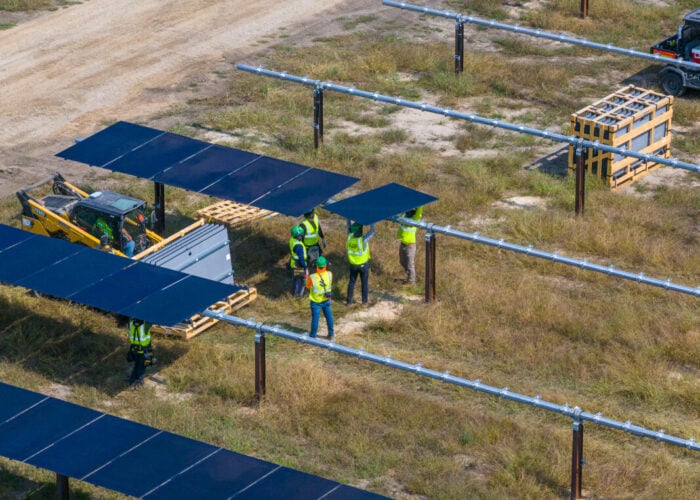The Coalition for Affordable Solar Energy (CASE) has commissioned an economic analysis to counter the petitions to the US Commerce Department and the US International Trade Commission by SolarWorld, demanding 250% tariffs on Chinese imports. The Brattle Group has found that a 100% tariff on imported solar PV cells and modules from China would result in as many as 50,000 net lost jobs in the US over the next three years. Furthermore, retaliatory tariffs placed on US exports of polysilicon to China would put nearly 11,000 more American jobs at risk in the first year following tariff imposition.
The study examined the impact of imposing a 50% tariff or a 100% tariff on the US solar industry through to 2014. For each scenario, the study provides both a low and high estimate to account for variability in modelling the price elasticity of supply and demand. The study stated that a tariff of 100% would result in consumer losses between US$698 million and US$2,620 million. That would eliminate between 16,917 and 49,589 American jobs over the next three years. Similarly, a tariff of 50% would result in net consumer losses between US$621 million and US$2,287 million. That would cause between 14,877 and 43,178 job losses over the same period. These figures are all net of any potential gains in cell or module manufacturing.
Try Premium for just $1
- Full premium access for the first month at only $1
- Converts to an annual rate after 30 days unless cancelled
- Cancel anytime during the trial period
Premium Benefits
- Expert industry analysis and interviews
- Digital access to PV Tech Power journal
- Exclusive event discounts
Or get the full Premium subscription right away
Or continue reading this article for free
To measure job effects of solar module price increases, the Brattle analysis uses the same type of analytical model (IMPLAN) as government agencies, industry and economists to measure economic impacts.
However, The Brattle Group’s study did not consider the potential impacts that increased solar electricity prices could have on undermining support for solar policy across the United States. Analysts have expressed concern that solar industry infighting and higher prices would undermine the solar industry’s credibility and public policy support.
“This analysis makes it clear that imposing even a 50% tariff, much less than SolarWorld has requested, would be devastating for American workers,” said Jigar Shah, president of CASE. “We cannot allow one company’s anti-China crusade to threaten the US solar industry and tens of thousands of American jobs.”
Dr. Mark Berkman, author of the report and principal at The Brattle Group, stated, “While the US solar industry has many facets and is quite complex, we were able to model the industry by utilizing straightforward economic analytical methods. We started by projecting the reduced demand for solar systems resulting from price increases due to tariffs. We then analyzed projected job gains and losses under two scenarios, each using a 50% and 100% tariff on imported solar cells and modules. Even under the most conservative assumptions, we did not find a scenario where imposing a tariff would create more jobs than it eliminates.”
According to the Brattle analysis, if no tariff is imposed “the aggregate demand for photovoltaic systems is expected to grow from 1,678 MW in 2011 to 4,894 MW by 2014. A 50% tariff will raise industry-wide prices and delay solar industry growth, with total MW demand falling to as low as 3,350 MW in 2014. A 100% tariff will delay this growth even more with demand falling to as low as 3,159 MW in 2014. It is a significant decline in the market for solar cells that is central to the decrease in jobs identified in this study.”
Shah also noted that the findings of this study are consistent with a story in The Wall Street Journal relating to tariffs placed on Chinese tires. The Journal reported, “The measure was meant to whack imports of passenger and light-truck tires and give a boost to manufacturers and job creation in the US. Yet, for a variety of reasons, it has apparently done little of either – and has surely raised prices for consumers.”






